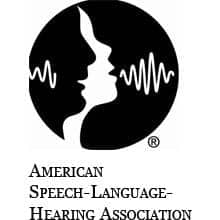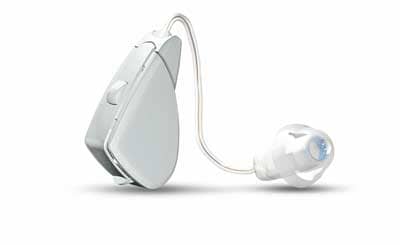By Melanie Hamilton-Basich
Providing audiology care remotely is now possible thanks to technology, but not all hearing care professionals (HCPs) are making use of this option— often because they are unsure of how to incorporate it into their practice. The new textbook “Teleaudiology Today: Remote Assessment and Management of Hearing” aims to bridge that gap. Here, two of the authors—Vinaya Manchaiah, AuD, MBA, PhD, and De Wet Swanepoel, PhD—share with The Hearing Review their perspective on teleaudiology as it’s currently being used and how they hope their book will help to increase adoption through educating clinicians and students about its use and benefits.
Further reading: Teleaudiology And Hearing Aid Care: Consumers Are Satisfied, Why Aren’t We?
Melanie Hamilton-Basich: Why did you and your co-authors write the book “Teleaudiology Today: Remote Assessment and Management of Hearing Loss”? Who is it for, and what hopes do you have for its use and impact?
Vinaya Manchaiah: During the COVID- 19 pandemic there was an increase in the need for audiologists to use teleaudiology methods to deliver services to their patients as a result of physical distancing measures enforced throughout the world. As there is limited coverage of teleaudiology concepts in audiology education programs, many of us were contacted by practicing clinicians to provide information via emails and webinars so that they could get a quick training. At that time, we decided to work on this textbook.
This book is targeted at audiology clinicians and students who are interested in learning teleaudiology approaches for providing hearing care for adults with hearing loss. We have written the text in a consulting style to provide more practical knowledge and hope that it will help its users to adopt some of the approaches discussed in their clinical practice.
Hamilton-Basich: How much of a factor is people’s familiarity with digital technologies when it comes to their openness to teleaudiology—for HCPs and their patients?
De Wet Swanepoel: Openness to technology could be an important factor in hearing healthcare professionals’ adoption of telehealth approaches in the clinical practice as well as in patients accepting the new models of service delivery model. Nevertheless, we also believe that people who have less exposure to technology can also quickly learn to become proficient users with some support. For instance, if we go back a decade or two ago, who would have thought then that such a large percentage of the population would now be using online banking or social media. We believe that people have much more technological competence than they generally realize.
Hamilton-Basich: You state in the book that “many audiologists have been slower to embrace this model compared to their healthcare counterparts.” Why do you think telehealth is not being used by HCPs as much as it maybe should or could be?
Manchaiah: Despite being a technology driven profession, audiology has been slow to adopt telehealth approaches in our practices. One reason could be that a large portion of the population we serve are older adults and many hearing healthcare professionals may underestimate the technological competency of this population. And then there is the additional cost as well as training required to implement such methods in clinical practice. Plus, there are some policy issues in terms of getting reimbursement for teleaudiology practice that could influence whether HCPs make use of this technology. There is also limited education about teleaudiology approaches in audiology training programs.
COVID-19 forced rapid adoption of teleaudiology approaches, increasing familiarity as well as an openness to utilize these approaches in service delivery. But then when lockdowns ended, they were no longer seen as necessary. Some clinicians have continued to use them afterward, while others may have returned to normal practices.
Providing training in teleaudiology approaches very early in audiology education, ensuring appropriate policy to have teleaudiology services reimbursed, and also making some funding available for equipment could potentially help increase and sustain the adoption of teleaudiology approaches.
Hamilton-Basich: How important is it for patients to understand not just the advantages, but also the limitations of remote audiology care? How does that impact HCPs’ ability to make effective use of teleaudiology in their practices?
Swanepoel: Like any type of practice, teleaudiology has some potential limitations. For instance, not all patients may have either the competency or the motivation to participate in a teleaudiology service delivery model. In addition, if we think of offering the care directly at home, many individuals may not have the infrastructure (i.e., personal computer, good bandwidth internet connection) to be able to participate in such approaches. Moreover, many individuals may also have difficulties in communicating with a clinician being in a different space and missing out on some spatial cues.
It is important for hearing care professionals to identify which patients are right for these approaches, and also what type of service can be most appropriately delivered using teleaudiology. For instance, often clinicians limit the use of teleaudiology approaches for screening, diagnosis, or hearing instrument provision. While these aspects can be effectively done via teleaudiology approaches, other aspects such as counseling, decision-making, and rehabilitation can also be effectively delivered via teleaudiology.
Hamilton-Basich: In your opinion and experience, how is the use of teleaudiology changing hearing care—for HCPs and for patients— and what do you expect it to look like in the future?
Manchaiah: Despite slow adoption, teleaudiology approaches have made their way into audiology practice. This is partly due to the COVID-19 pandemic. But also, direct-to-consumer (DTC) devices and services are becoming popular in hearing healthcare, fueled by technological advancements as well as policy changes. For example, many hearing aid companies and some cochlear implant companies offer smartphone apps for their devices through which clinicians can connect with their patients and monitor them closely as well as provide necessary care remotely.
With the emergence of over-the-counter (OTC) hearing aids in the United States, we’re also seeing a lot of service delivery innovation with companies offering different levels of services using teleaudiology models. However, we only see this as the beginning.
In the future, artificial intelligence and machine learning (AI/ ML) models are likely to significantly intersect with teleaudiology approaches. For instance, it is likely that many chatbots will be created that will help serve a large number of people 24/7.
Hamilton-Basich: Is there anything else you’d like to share about the benefits of reading this book?
Swanepoel: We believe that the new book will help fill a gap in audiology by providing sorely needed clinical information for practicing clinicians and students. All of the chapters are written by clinician scientists who have both extensive research experience as well as clinical knowledge and are considered leading experts in their field. We have also kept the price lower (Kindle version for $9.99 or a paperback version for $19.99) compared to other textbooks on the market. It is also important to note that all proceeds from this book will be used to support research into providing accessible hearing care in sub-Saharan Africa.
As the practice of teleaudiology is dynamic, we hope to make periodic updates to this textbook. We welcome any suggestions hearing care professionals may have which could help improve the textbook for future versions.
Teleaudiology Today: Remote Assessment and Management of Hearing can be purchased at Amazon.com.
Featured image: (left to right) Vinaya Manchaiah, AuD, MBA, PhD; and De Wet Swanepoel, PhD.




